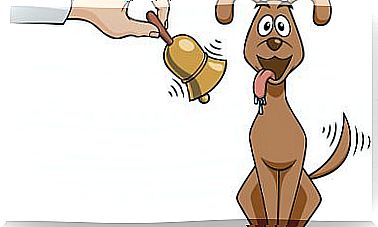Do You Know The Brief Strategic Family Therapy?

The objective of brief strategic family therapy is to overcome specific problems for which the family demands help. Another closely related objective is to improve the relationships established within it.
Brief strategic family therapy is made up of various approaches with a common trait. The therapist will be the one who will define the strategy to solve the family’s problems.
This therapy maintains the characteristics of strategic therapy and brief therapy. Brief strategic family therapy focuses on solutions above all else and lasts between 6 and 20 sessions, which is why it is called “brief”.
The birth of family therapies
There is a discrepancy as to who was the forerunner of family therapies. On the one hand, there is evidence that psychodynamic therapists were the first to include the family in the therapeutic process.
They were therapists as Murray Bowen, with his theory of family systems, or Nathan Ackerman, his hypothesis familiar symbiosis, the first to invite the whole family to participate in therapy one of its members.

On the other hand, research on communication, carried out in Palo Alto, encouraged the creation of the first systemic psychotherapeutic research institute. It was christened the Palo Alto Mental Research Institute (MRI). This is where brief systemic therapies derive.
What is brief strategic family therapy?
Brief strategic family therapy is a family therapy approach. Therefore, its objective is to solve the problems that occur within the family. It has its origin in the systemic model developed at the Mental Research Institute and the Palo Alto Group (MRI).
This model of therapy also draws on the sources of the problem-solving model, the contributions of the Milan group, and the constructivist model. It draws on the previous contributions and was born with the aim of seeing what works in the different models and how to implement it in the shortest possible time.
Brief strategic family therapy looks at family interactions. It tries to get each member to participate in the therapeutic process and it develops in different stages, which we will see later.
Brief strategic therapy
Brief strategic therapy is defined as a therapeutic structure aimed at increasing patients’ awareness of their behaviors. These behaviors are the problem being queried for.
One of the strengths of brief strategic therapy is that it is an intervention modality that allows you to adjust to current demands. It is aimed at effectiveness and shortening the period of psychotherapy.
It is also aimed at increasing the capacity and motivation to start doing something about it. The various studies in this regard conclude that what works is to focus on solutions rather than problems.
What makes a therapy strategic is the attitude of the clinician. It is he who initiates what happens in it and actively designs a particular approach to each problem. The initiative and responsibility are with the therapist. It is aimed at directly influencing people, in such a way that this change occurs.
To be strategic is to be, in a way, “manipulative” or “persuasive”, since there are assigned tasks, some to do and others not to do. An implicative language is used, behavioral traps, use of paradoxes, etc.

Basic principles of brief strategic family therapy
The most general basic principles on which family strategic brief therapy is based are the following (Watzlawick & Nardone, 2000):
Circular causality
Faced with a certain situation, one should not fall into the cause-effect equation. We must put the interest in the study of the variables involved. To understand this better we are going to give an example.
To blame an authoritarian father for his son’s problematic behavior would be to fall into reductionism. The correct thing to do would be to define both behaviors, along with those of the other members. Describe the factors that maintain the situation, as well as those that protect it from getting worse.
Reducing complexity
Families are a complex entity. So are the models that study and intervene in them. Brief strategic family therapy aims to be an alternative and proposes a specific intervention to specific problems.
Tried solutions
The solutions tried represent the maximum focus of attention of this therapy. You have to answer questions such as what worked in the past or today and what can we establish as a benchmark?
Another basic principle of brief strategic family therapy would be to break the system in such a way that it can try new solutions and even changes in its structure. A last principle tells us that a strategic construction, derived from the breakdown of the previous one, will be a modified, more adaptive and healthy structure.
Therefore, the strategic approach tries to adopt a new conception about how we relate as a family. And, above all, what can we do to improve those relationships.

Phases of brief strategic family therapy
Brief strategic family therapy develops in the following phases (Nardone & Watzlawick, 2000):
First interview
It begins with a social stage in which the family is welcomed. The family is invited to explain the problem, each member from their perspective. Afterwards, a first feedback is given on how the situation looks and the approaches for the next session.
Descriptive analysis of the problem situation
A detailed analysis is carried out from two or more members of the family and the problems for which the family makes the claim. In addition, an essential part of this analysis will be the solutions that have been tried previously.
The goals of therapy are then defined. The therapist, from the first meeting with the patient, focuses attention and assessment of the following elements:
- What happens within the three types of interdependent relationships that the subject lives with himself, with others and with the world.
- The way in which the presented problem works within that relational system.
- How the subject has so far tried to combat or solve the problem.
- How is it possible to change such a problematic situation in the fastest and most effective way.
Definition of the family strategy
The solutions to be tried are defined in the future. These solutions must be carried out by the family to improve their situation.

Measurement and planning
In this phase, the effects of the applied strategies will be measured. Then new strategies will be planned.
Closure of the intervention
Finally, the situation will be monitored to guarantee the consolidation of the changes achieved.
The results of brief strategic family therapy are immediate and measurable. As we said at the beginning, the number of sessions varies between 1 and 40 (the average is 6 to 20 sessions).
In general terms, brief strategic family therapy is characterized by focusing on the solution and defining objectives directed towards change. The foundation of a strong therapeutic alliance is key and family-friendly language is used.
Bibliographic references
Watzlawick, P., Beavin, JH, & Jackson, DD (1983). Theory of human communication . Barcelona: Herder.
Haley, J. (1980). Therapy to solve problems . Buenos Aires: Amorrortu.
De Shazer, S. (1992). Keys in brief psychotherapy . Barcelona: Gedisa.









